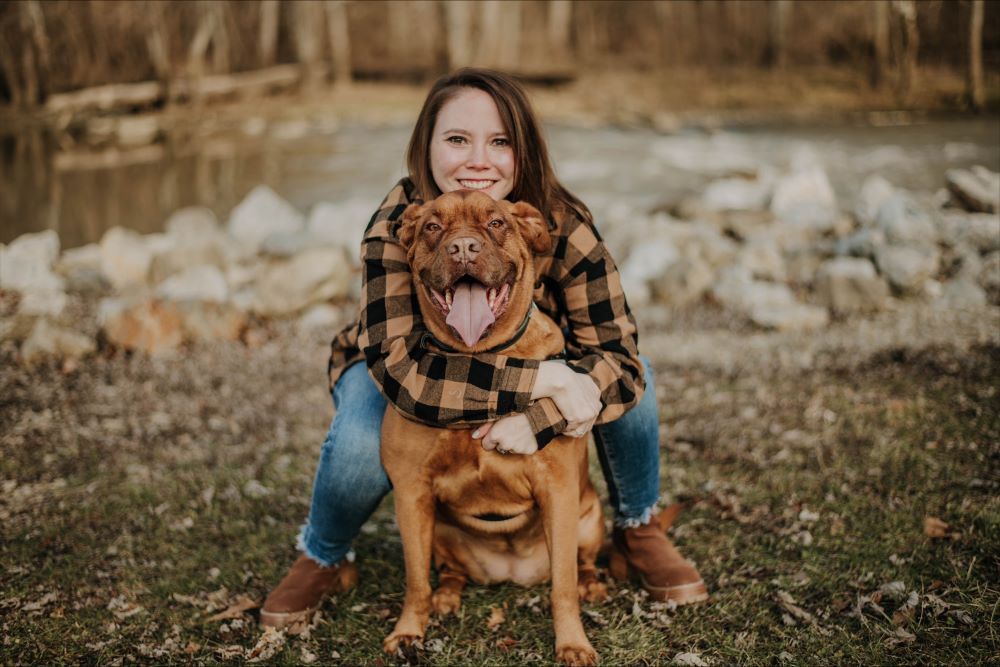Orthopedic Care
Want to learn more about this at Kettering Health?
Virginia Chappius opened her eyes as the truck came to a stop. The passenger-side airbag pressed against her, and smoke filled the quiet air. A tree stood just beyond the cracked windshield.
She crawled out of the truck and called 911. Then the pain in her abdomen took over her thoughts.
“It was like a million knives were twisting inside my stomach,” she said.
An ambulance arrived, and first responders put Virginia on a stretcher. When asked where she wanted to go, her answer was simple: Kettering Health.
Putting Virginia back together
The ambulance ride to Kettering Health Dayton had been a blur. All Virginia wanted was to tell her family, unaware that her then-boyfriend—who was in the accident with her—had called her dad. The pain radiating through her body when the emergency staff transferred her snapped her back into the moment.
“I started screaming,” she said.
As a medical assistant for Kettering Health, Virginia knew “put her in triage one” was not a good sign. The highest level of five, level one is reserved for patients who need immediate, lifesaving care.
Several X-rays and a CT scan revealed that her spine, left collar bone, and left humerus were broken. And her stomach and colon had been pushed into her chest during the collision.
She needed emergency surgery, but pain medication helped until then. As the pain melted away, she closed her eyes for a moment of peace. Compared to the agony she felt a minute before, the numbness in her body felt surreal.
“I honestly thought I died,” she said.
Slowly, she opened her eyes and saw her parents, blurry without her glasses, bending down to give her a kiss. She saw her sister, too.
Dr. Jordan Brown, a general surgeon, came in, introduced himself, and explained he would bring Virginia’s stomach and colon back down through her abdomen to avoid cracking her chest.
Virginia, prepped for surgery, felt a nurse play with her hair while another held her hand. The next thing she knew, she awoke in the ICU.
Learning to live again
Virginia left the hospital a week later with a back brace and arrangements to move in with her parents. Even though she persevered through so much already, her journey was just beginning.
She returned a week later for Dr. Jerrod Steimle, an orthopedic surgeon, to fix her broken collarbone and humerus—with a metal plate and eight screws. She began physical therapy to learn how to use an arm now made of bone and metal.
At home, Virginia faced more obstacles. The simple things that she took for granted—getting dressed, making food, bathing, going to the restroom—she depended on her parents for.
“It was like I was a toddler again,” she said. “I had to have somebody there all the time.”
But she learned to navigate life with her repaired body . Her back brace came off a month later and going to physical therapy helped her strengthen her left arm. She’s cautious, afraid one wrong move will set back her progress. But she can use her arm again and has regained some independence.
“It’s not pretty by any means,” she said, “but I can move it.”
It’s taken Virginia a while to feel comfortable in cars. Even now, she’s tense behind the wheel, driving more than an hour to work from her parents’ house. She plans to move back to the Dayton area, but only when the time is right.
Taking time to heal
Over time, Virginia has regained some normalcy in her life, but she knows there will always be a clear divide between the time before her accident and the time after. The scars from her surgeries are a reminder of this.
“Everyone’s like ‘They’re just scars. It’s okay,’” she said. “No. They’re not scars from a funny story. They’re not scars from having a baby. They decided if I lived or died.”
To help heal, she booked a professional photo shoot, specifically to showcase her scars. She also got a tattoo. It reads “beauty from ashes” with the date of her accident: July 22, 2022.
“This is a scar I don’t mind to show,” she said, “because it’s a part of who I am.”
She knows she has more healing to do, both physically and mentally. She knows she might have more surgeries and more physical therapy. More appointments and more adjustments.
But she also knows a time will come when she’ll move past this part of her journey. And when she does, she’ll sit back and appreciate her second chance at life.
“I may just drive somewhere where it’s very quiet and take my dog and just sit there and just have a chance to breathe.”










